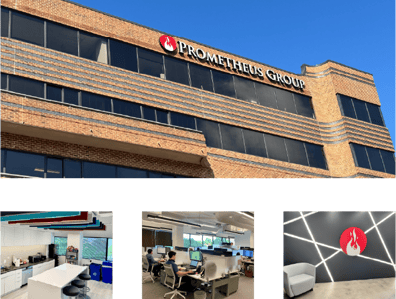Flexibility has gotten a lot of press recently in the business world, thanks in large part to the pandemic. A lot of the discussion has focused on workforce flexibility, such as permitting employees to work from home or set their own hours. Maintenance organizations usually can’t take advantage of this kind of flexibility.
On the other hand, we’ve also seen a lot of discussion regarding organizational flexibility, the ability to change course swiftly and with great precision when the need arises. Organizational flexibility holds great value for maintenance and asset management. Mobility is the key to attaining this flexibility.
A flexible maintenance organization can more easily respond to emergency and break-in work, increase wrench time with accurate job time reporting, and get more done with fewer resources.
The expression “too much of a good thing” applies here. Flexibility in asset management must be balanced against the need to accurately and effectively plan and schedule maintenance activities. You can strike this balance with a mobility solution designed for the needs of maintenance and asset management.
We’ve assembled a short list of some of the ways a good mobile solution can make you more flexible.
1. Mobility Increases Worker Flexibility and Availability
Mobility not only gives you better and more flexible communication channels, but also offers a host of other benefits. A good mobile solution will allow workers in the field to instantly access work orders, safety information, schematics, and other vital information. This easy access to complete information empowers maintenance workers to make better decisions at the work site.
When it’s done properly, mobility can also increase available wrench time. Part of this is simply because workers waste less time on non-essential and administrative tasks, as a good mobile solution automates parts of these processes. Better and more accurate data may help even more.
Mobility gives you more in-depth and more accurate reporting from field workers. At even a basic level, this allows planners and schedulers to create job plans that more accurately reflect how long particular jobs will take.
-1.png)
2. Mobile Solutions Give Planners and Schedulers More Options
Planning and scheduling best practices require accurate and complete data. As we’ve already noted, mobility increases the accuracy and completeness of data gathered during the execution of work orders. This data is key to improving planning and scheduling and we don’t mean only historical data.
Mobility gives you real-time insight into metrics like schedule compliance, backlog trends, and labor utilization, allowing you to adjust job plans and schedules as required. In turn, this leads to a more collaborative and more efficient environment.
The value of doing away with paper in favor of a mobile solution shouldn’t be underestimated. Paper-based data gathering can be compared to putting water in your gas tank.
3. Access to Materials and Inventory Stock Improves Quality of Work
Live, updated access to stockroom information means jobs won’t start until everything is ready to go. Mobility can show everyone involved exactly what needs to be ordered and when it will need to be there for the job to be completed without interruption, thereby improving overall quality of work.
Mobility also helps to ensure that staff are recording accurate stock data. A solution that allows you to scan barcodes to check materials in and out will help ensure you don’t experience sudden stock-outs. For non-consumables, RFID tags can be used to track exactly where in the facility the material goes and when it’s returned to stores.
Barcode scanning can be also be used to access equipment data and history while in the field. Taken together, these capabilities make barcode scanning a must-have for any EAM mobile solution.
4. Leveraging Mobile Technology Can Enforce Business Practices and Standards
-1.png)
A mobility solution designed for the needs of maintenance should have checks and balances that prevent workers from entering incorrect or incomplete information. Prometheus Mobility does this in a couple of ways. First, all job steps are presented sequentially.
Workers cannot proceed to the next steps until they have completed the previous ones. This ensures that everything is done in the correct order. Second, the information gathered during the job, such as inspection results, must be entered in the correct format. This preserves data integrity.
At first, this aspect of mobility might seem like it will decrease flexibility. From one perspective, this is completely correct. This is not an area that needs flexibility! Job steps are ordered that way for good reasons. Errors in data entry don’t have any benefit at all.
While this aspect limits the flexibility of individual workers, it increases the flexibility for the maintenance organization as a whole. Ensuring job plans are followed to an exact level of detail helps to ensure that they’re done with a minimum of downtime and without sacrificing the quality of work. Mobility also gives you the ability to make job location information available via GPS, providing critical information about the execution of work orders.
Maintenance organizations that adopt mobility experience numerous benefits when they implement the right solution. Our eBook, “Your Asset Management and Mobility Strategy,” explores five best practices to leverage the power of mobility to optimize your maintenance workflows.
For more information on how to increase the flexibility of your maintenance organization with mobile solutions designed for maintenance and asset management, please contact Prometheus Group here.



